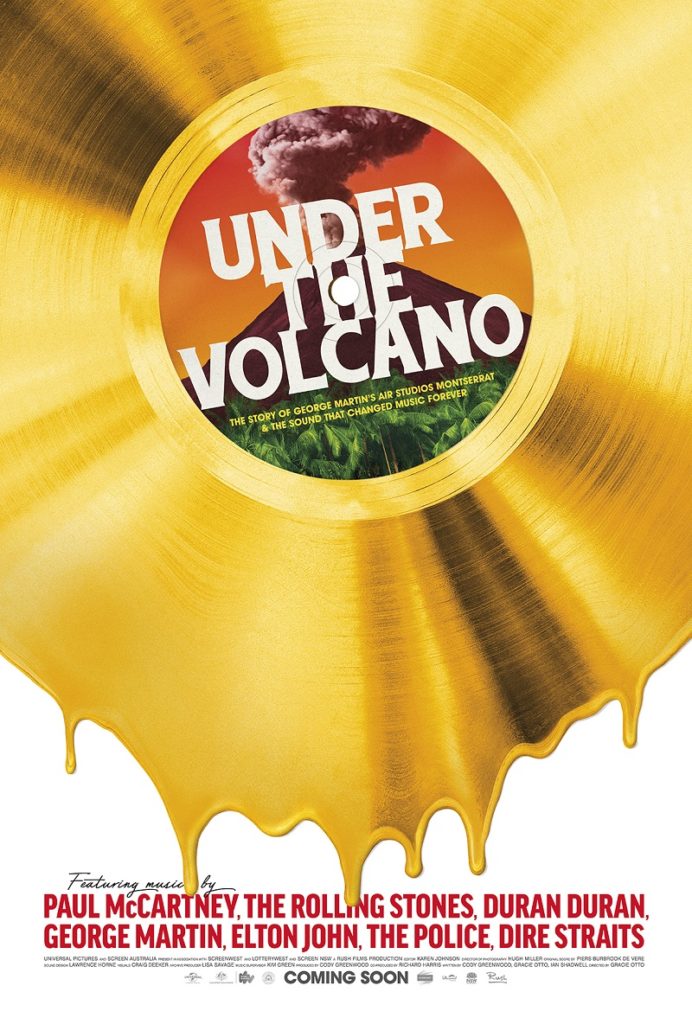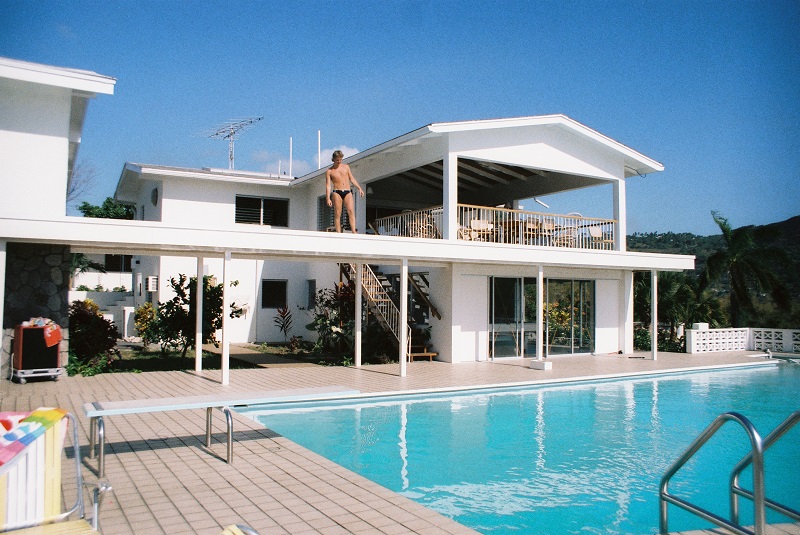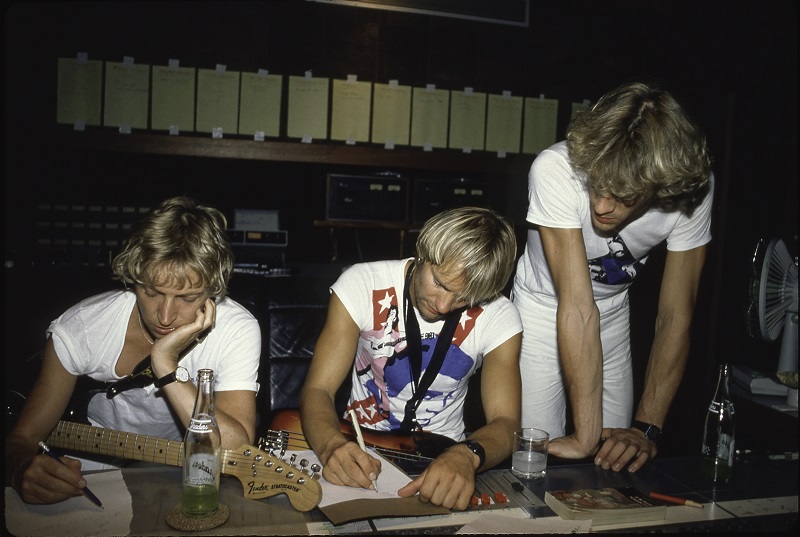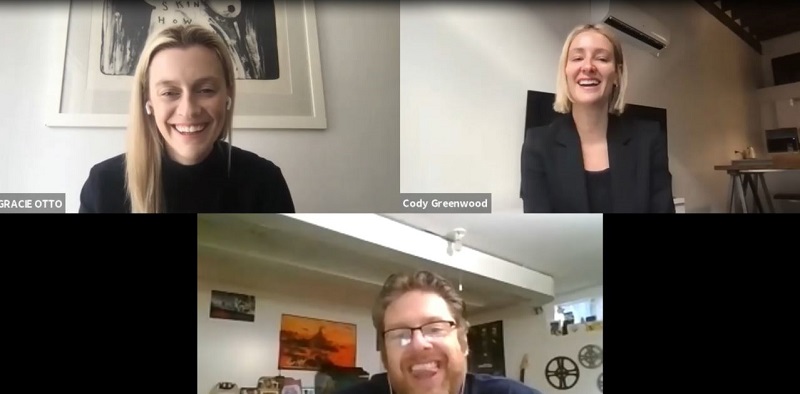Gracie Otto ( (Director, Co-Writer) and Cody Greenwood (Producer, Co-Writer) had a feeling they were sitting on a goldmine when they decided that their next documentarian effort would be to chronicle the triumphant rise and tragic fall of Sir George Martin’s AIR Studios in Montserrat.
The Movie Mensch was beyond honored to speak to Otto and Greenwood (both Zooming in from Australia) to gather some exclusive and juicy information about the making of their movie. But the duo also provided that rare glimpse into the magic that occurs during a recording season and how these artists felt about AIR, decades after its collapse under the titular volcano and its place in the annals of pop music history.
The pair spoke candidly about what they learned about this locale that was, in hindsight, seemingly as logical as a three-chord hit song.
Now, artists hop around the globe in search of the perfect recording environment, and it is not seen as revolutionary. Yet when Martin decided that his post-Beatles producing tenure was imperative on leaving the confines of Abbey Road in London and venturing into the unknown… it was seen exactly that way. Sure, oftentimes it’s the usual suspects, i.e., Electric Lady Studios in New York City or Capitol Records in Los Angeles, or Motown in Detroit and Sun Studios in Memphis.
Martin’s gamble paid off as artist after artist made a pilgrimage to Montserrat to not only see, meet, live alongside, dine and celebrate life with the man credited with that “Beatles” sound, but with AIR and the people and landscape of Montserrat… it was much more organic, fateful, and a connection between nature and its innate rhythms and rhymes.
Albums, classics of the 80s or any era for that matter, that were recorded at AIR Studios include Dire Straights’ Brothers In Arms—which includes hits Money for Nothing and Walk of Life, The Police’s made the trip and recorded classic album albums Ghost in the Machine as well as their Grammy-winning final (and most successful) album Synchronicity.
In fact, filmmakers scored immensely with first-hand accounts and fresh interviews with Sting, Stewart Copeland, and Andy Summers. Their take on the demise of their band was sad, honest and with the benefit of hindsight, touched with a ping of regret. There have been few pop-culture cinematic moments where one could feel in real time one of the most gifted of artists being touched by something otherworldly under that Montserrat sunshine, surrounded by a people whose effect on the musicians was palpable. Under the Volcano is one of those.
Timing is everything. The artists that contributed to this documentary have had the benefit of time and maturity to reflect on the experience of a lifetime. There’s also the timing involved with the bevy of music that each artist or band brought with them at that particular time in their musical journey to an island that produced a marriage that lives on radios and yes, Spotify, decades later.
Albums, such as McCartney’s Tug of War (which featured Stevie Wonder and the former Beatle’s hit song Ebony and Ivory—were recorded at AIR. In fact, there’s a great series of images in the doc from a late-night jam session with McCartney and Wonder at a local pub. Every soul in attendance that evening thanked their lucky stars that that night was the one they chose to go out!
Others album experiences shared in the documentary include John’s Too Low for Zero (which featured the comeback song of all-time I’m Still Standing), and Nick Rhodes waxing poetic about Duran Duran, and their experience at AIR recording Rio and Seven and the Ragged Tiger. There’s also an incredible segment where the recording of Earth Wind and Fire’s classic Faces is discussed, complete with a new interview with group co-founder Maurice White.
Then, there’s The Stones. The Rolling Stones needed a fresh take (or something) on their entire career and Martin helped them with that by providing a locale where musicians could make it what they will. See now, Lenny Kravitz has his own studio on the island of the Bahamas. Back when Sir Martin built his music mecca, what he was doing was considered exceptionally risky.
This is the tip of the extensive topic Otto, Greenwood, and I was able to fit into a 15-minute interview. We covered what was in the “water” in Montserrat and even though the results were all exemplary, the artists themselves were from vastly different musical walks of life. They shared what (surprised) them the most about the locale with their research and filming, a deep dive into the Police, visiting the volcano overrun island now, and hearing the sounds of the winds through the trees but the absence of musical mastery.
Under the Volcano is the definitive chronicle of a time in music history where cameras act as a fly in the wall and the viewer has the fortune of being in the midst of something that can be only described as greatness. Otto and Greenwood have captured lightning in a bottle. Which is incredible, given that their subjects were doing the same. The filmmakers wisely included the people of Montserrat to interview and provide context with what made the whole thing so special.
Otto and Greenwood scored interviews with AIR’s chef, the bartender at the local watering hole who entertained these iconic most evenings, and well as souls who have remained in contact with the likes of Sting and others.






